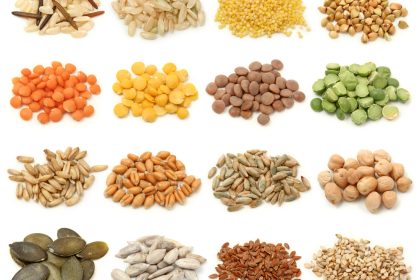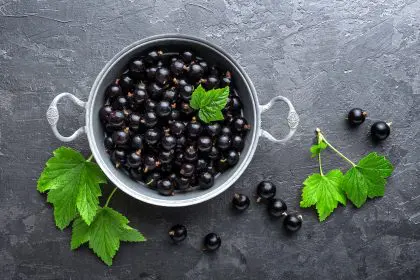The treatment landscape for type 2 diabetes has long been dominated by pharmaceutical approaches that manage symptoms without addressing the underlying metabolic dysfunction. While medications play an important role in diabetes care, emerging research continues to validate the extraordinary power of specific foods to directly target the core mechanisms of this condition. These natural alternatives work through multiple pathways simultaneously—improving insulin sensitivity, reducing inflammation, optimizing gut microbiome composition, and enhancing cellular energy production—creating comprehensive benefits that no single medication can match. When strategically incorporated into daily eating patterns, these foods can significantly reduce blood sugar fluctuations, decrease medication requirements, and potentially create the physiological conditions necessary for partial or complete diabetes remission.
Berries: Nature’s blood sugar regulators
Among the most powerful plant foods for diabetes management, berries deliver exceptional benefits through their unique combination of bioactive compounds. Blueberries, strawberries, blackberries, and raspberries contain specialized anthocyanins that directly influence glucose metabolism and insulin signaling pathways with effects comparable to certain diabetes medications.
The mechanism behind berries’ blood sugar benefits involves several complementary pathways. Their polyphenol compounds activate AMPK, a master metabolic regulator that increases glucose uptake into cells independent of insulin, essentially creating an alternate pathway for blood sugar clearance that remains functional even when insulin resistance exists. Additionally, berry compounds improve mitochondrial efficiency, enhancing cells’ ability to properly metabolize glucose once it enters, preventing the cellular energy crisis that contributes to insulin resistance.
Clinical research demonstrates remarkable outcomes from regular berry consumption. Daily intake of about two cups of mixed berries can reduce post-meal blood sugar spikes by 25-33% while simultaneously improving insulin sensitivity by approximately 20% over six weeks. These benefits emerge quickly, with improved glucose responses measurable within hours of consumption, and build cumulatively with consistent intake.
The fiber content in berries provides additional advantages through both direct blood sugar stabilization and beneficial impacts on gut microbiome composition. Berries promote the growth of specific bacterial strains that produce short-chain fatty acids, which independently improve insulin sensitivity and reduce systemic inflammation driving diabetes progression.
For practical implementation, incorporating berries daily yields the most consistent benefits. Fresh berries provide optimal nutrition, but frozen varieties retain most beneficial compounds while offering greater affordability and convenience. Adding berries to morning meals helps establish the metabolic tone for improved glucose regulation throughout the day, while evening consumption supports overnight cellular repair processes that contribute to long-term metabolic improvement.
Leafy greens: Metabolic medicine in plant form
Dark leafy greens represent some of the most potent food-based medicine for reversing insulin resistance and improving glucose metabolism. Vegetables like spinach, kale, arugula, and Swiss chard deliver exceptional nutritional density with minimal blood sugar impact, creating immediate and long-term benefits for diabetes management.
The diabetes-fighting power of leafy greens stems primarily from their nitrate content, which converts to nitric oxide in the body. This compound enhances blood flow, improves insulin delivery to tissues, and activates glucose transport proteins that facilitate sugar movement from bloodstream into cells. Clinical studies demonstrate that consuming two cups of nitrate-rich greens daily can improve insulin sensitivity by up to 30% within three weeks, comparable to effects from commonly prescribed sensitizing medications.
Beyond nitrates, leafy greens provide unique antioxidant compounds that protect the pancreatic beta cells responsible for insulin production. This cellular protection helps preserve remaining insulin-producing capacity, addressing one of the critical aspects of diabetes progression that medications typically cannot target. The substantial vitamin K content in greens also improves insulin sensitivity through specialized receptor signaling pathways distinct from those targeted by diabetes medications.
The fiber matrix in leafy vegetables delivers additional benefits through its effects on digestion rates, gut hormone production, and microbiome composition. Soluble fiber from these foods triggers GLP-1 release, mimicking the action of an entire class of diabetes medications while simultaneously feeding beneficial bacterial strains that independently improve glucose regulation.
Practical implementation strategies include incorporating leafy greens into multiple daily meals rather than single large servings. Blood sugar benefits accumulate with consistent intake, making frequency more important than quantity. Consuming greens at the beginning of meals provides maximal digestive and metabolic advantages by slowing carbohydrate absorption from subsequent foods and establishing beneficial hormonal responses early in the digestive process.
Legumes: The blood sugar balancing powerhouses
The bean family—including lentils, chickpeas, black beans, and kidney beans—provides exceptional diabetes-fighting benefits through their unique macronutrient profile and specialized bioactive compounds. Despite their carbohydrate content, legumes demonstrate remarkable blood glucose stabilizing effects that can significantly reduce diabetes progression.
The specialized starch composition in legumes creates their powerful blood sugar benefits. These foods contain high proportions of resistant starch and amylose, which digest slowly and produce minimal glucose elevations compared to other carbohydrate sources. More importantly, these specific starches improve insulin sensitivity through enhancement of GLP-1 production and beneficial alterations to the gut microbiome that persist beyond the immediate post-meal period.
Clinical research confirms dramatic benefits from regular legume consumption. Replacing just half a cup of typical starchy foods with legumes daily reduces average blood glucose levels by approximately 0.5% HbA1c—equivalent to effects from certain diabetes medications. Studies tracking participants for over four years demonstrate that those consuming legumes four or more times weekly show 35% lower diabetes progression rates compared to those eating them less than once weekly.
The substantial protein content in legumes provides additional metabolic benefits by triggering glucagon-like peptide-1 (GLP-1) release, the same gut hormone targeted by many newer diabetes medications. This natural hormonal stimulation improves insulin secretion timing, enhances satiety, and slows gastric emptying for better post-meal glucose control without the side effects associated with pharmaceutical GLP-1 agonists.
For practical implementation, incorporating smaller portions of legumes frequently outperforms occasional larger servings. Traditional preparation methods like soaking and pressure cooking maximize digestibility while preserving beneficial compounds. Combining legumes with acidic ingredients like lemon juice or vinegar further reduces their glycemic impact while enhancing mineral bioavailability, creating additional metabolic benefits.
Cinnamon: The insulin-mimicking spice
Among culinary spices, cinnamon stands out for its remarkable ability to improve insulin sensitivity and glucose metabolism through multiple mechanisms that parallel pharmaceutical approaches. This common kitchen ingredient contains compounds that exert insulin-like actions while simultaneously enhancing the body’s response to its own insulin.
The active compounds in cinnamon, particularly methylhydroxychalcone polymer (MHCP), structurally resemble insulin and can activate insulin receptors, essentially mimicking insulin’s function at the cellular level. This unique property proves especially valuable in type 2 diabetes where insulin resistance rather than absolute insulin deficiency typically drives blood sugar elevations. Additionally, cinnamon improves insulin receptor phosphorylation—a critical step in insulin signaling—effectively sensitizing cells to respond more efficiently to available insulin.
Beyond direct insulin-mimetic effects, cinnamon slows carbohydrate digestion by inhibiting digestive enzymes that break down complex carbohydrates. This action, similar to the diabetes medication acarbose, reduces post-meal glucose spikes by preventing rapid starch conversion to glucose. Cinnamon also enhances glycogen synthesis in the liver, improving the body’s ability to store excess glucose rather than leaving it in circulation.
Clinical studies demonstrate that consuming 1-6 grams of cinnamon daily can reduce fasting blood glucose by 10-29% while simultaneously improving insulin sensitivity by 18-20% within 40 days. These effects compare favorably with common diabetes medications but develop through different and complementary mechanisms, making cinnamon valuable both as a standalone intervention and as an adjunct to conventional treatment.
Not all cinnamon varieties offer equal benefits. Ceylon cinnamon (true cinnamon) provides metabolic advantages with minimal coumarin content, making it suitable for daily consumption. Cassia cinnamon demonstrates stronger immediate blood sugar effects but contains higher coumarin levels that may impact liver function with prolonged high-dose consumption, requiring more careful dosing consideration.
For practical application, incorporating cinnamon into multiple daily eating occasions provides more consistent benefits than single large doses. Adding cinnamon to morning meals proves particularly effective for establishing improved metabolic tone throughout the day. Combining cinnamon with carbohydrate-containing foods directly reduces their glycemic impact, creating immediate blood sugar benefits alongside the longer-term improvements in insulin sensitivity.
Extra virgin olive oil: The insulin sensitizer
Extra virgin olive oil provides exceptional benefits for diabetes management through mechanisms entirely different from glucose-lowering medications. This Mediterranean staple contains unique compounds that directly target insulin resistance at its cellular origins while simultaneously protecting pancreatic beta cells from oxidative damage.
The primary diabetes-fighting compound in olive oil, oleuropein, activates AMPK—the same cellular energy sensor targeted by the diabetes medication metformin. This activation increases glucose uptake into muscle cells independent of insulin while simultaneously reducing excess glucose production by the liver. These complementary actions address two fundamental metabolic defects in type 2 diabetes through a single natural compound.
Beyond glucose management, olive oil phenols protect insulin-producing pancreatic cells from oxidative damage and reduce inflammatory processes that contribute to insulin resistance. This cellular protection helps preserve remaining insulin-producing capacity, addressing a critical aspect of diabetes progression that most medications cannot target.
The monounsaturated fat profile in olive oil improves cell membrane fluidity, particularly in muscle tissue, enhancing insulin receptor function and intracellular signaling. This structural improvement in cell membranes creates lasting improvements in insulin sensitivity that persist beyond immediate consumption periods, contributing to long-term diabetes management.
Clinical research demonstrates that consuming 2-4 tablespoons of extra virgin olive oil daily improves insulin sensitivity by approximately 22% within three months—comparable to results from insulin-sensitizing medications. These benefits occur without weight gain despite the caloric content, as olive oil’s satiating properties and metabolic benefits typically prevent compensatory eating while improving nutrient absorption from accompanying foods.
Quality critically influences olive oil’s therapeutic potential. Extra virgin varieties retain substantially higher polyphenol content than refined oils, providing proportionally greater metabolic benefits. Fresh, properly stored oils preserve these sensitive compounds, while heat, light, and oxygen exposure progressively diminish therapeutic potential.
For practical implementation, replacing other cooking fats with olive oil creates initial benefits, but additional unheated applications provide maximum therapeutic compounds. Adding olive oil to vegetables dramatically increases absorption of their fat-soluble nutrients, creating synergistic benefits for diabetes management. Using olive oil in salad dressings, as a finishing drizzle on cooked foods, or even consuming a small amount directly before carbohydrate-containing meals provides the most potent blood sugar benefits.
Fermented foods: Microbiome medicine for metabolic health
The connection between gut microbiome composition and diabetes progression has emerged as one of the most significant recent advances in metabolic research. Fermented foods provide living probiotic organisms and specialized compounds that restore healthy microbiome balance, addressing a fundamental driver of insulin resistance that most diabetes medications completely overlook.
Naturally fermented foods like yogurt, kefir, sauerkraut, kimchi, and kombucha contain specific bacterial strains that produce short-chain fatty acids when they metabolize fiber in the digestive tract. These fatty acids, particularly butyrate, directly improve insulin sensitivity in liver and muscle tissue while reducing systemic inflammation that contributes to diabetes progression.
Beyond providing beneficial organisms, fermentation pre-digests certain components of foods, reducing their glycemic impact while increasing bioavailability of their nutrients. This process transforms the metabolic effects of the original ingredients, often converting potential blood sugar disruptors into blood sugar regulators through bacterial conversion of starches and sugars into organic acids.
Clinical research demonstrates that consuming fermented dairy daily reduces type 2 diabetes risk by approximately 22% compared to non-fermented dairy, with benefits increasing with consumption frequency. Similarly, regular consumption of non-dairy fermented foods correlates with approximately 14% lower diabetes incidence, highlighting the independent value of the fermentation process beyond the base food components.
The metabolic benefits of fermented foods develop through several mechanisms. These foods enhance GLP-1 production—the same gut hormone targeted by many newer diabetes medications—while improving tight junction proteins that maintain healthy intestinal barrier function. This barrier improvement prevents metabolic endotoxemia, a condition where bacterial components enter circulation and trigger inflammation that directly induces insulin resistance.
For practical implementation, incorporating small portions of fermented foods daily provides more consistent benefits than occasional larger servings. Consuming these foods near the beginning of meals maximizes their digestive enzyme contribution and establishes beneficial bacterial activity during subsequent food digestion. Rotating between different fermented food types provides diverse bacterial strains and complementary benefits that create more comprehensive microbiome support than relying on single fermented foods.
Nuts: Metabolic modulators in natural packaging
The remarkable benefits of nuts for diabetes management challenge conventional nutritional thinking but rest on substantial clinical evidence demonstrating their ability to improve insulin sensitivity and glucose regulation despite their caloric density. Almonds, walnuts, pistachios, and other tree nuts provide specialized compounds and unique nutritional profiles that directly target metabolic dysfunction.
The diabetes benefits of nuts stem from their distinctive fat composition, particularly their high content of polyunsaturated and monounsaturated fats that improve cell membrane fluidity and insulin receptor function. These structural improvements in cell membranes enhance insulin sensitivity in muscle tissue, where approximately 80% of insulin-stimulated glucose disposal occurs.
Beyond their fat profile, nuts contain specialized antioxidant compounds that reduce oxidative stress involved in both causing insulin resistance and damaging pancreatic beta cells. This cellular protection helps preserve remaining insulin-producing capacity, addressing a fundamental aspect of diabetes progression that medications typically cannot target.
The protein structure in nuts provides additional benefits through triggering satiety hormones that regulate appetite and metabolism. This hormonal response helps prevent post-meal blood glucose fluctuations while supporting weight management, addressing multiple aspects of diabetes pathophysiology simultaneously.
Clinical research demonstrates that consuming approximately two ounces of mixed nuts daily reduces HbA1c by 0.3-0.8% over three months—comparable to the effects of some oral diabetes medications. These benefits occur without weight gain despite nuts’ caloric density, as their high satiety value and metabolic effects typically prevent compensatory eating.
For practical implementation, consuming nuts before or during carbohydrate-containing meals provides the most immediate blood sugar benefits by slowing digestion and reducing glucose absorption rates from other foods. Soaking or lightly toasting nuts increases mineral bioavailability while preserving their heat-sensitive compounds, maximizing their metabolic benefits. Incorporating diverse nut varieties provides complementary nutritional profiles that collectively offer more comprehensive diabetes protection than relying on single nut types.
Turmeric: The golden inflammation fighter
The golden spice turmeric contains curcumin and related curcuminoids that powerfully target the inflammatory processes underlying insulin resistance. By addressing this root cause of metabolic dysfunction, turmeric provides benefits that complement rather than duplicate conventional diabetes medications.
Turmeric’s primary benefit for diabetes management comes through inhibiting NF-kB, a master regulator of inflammatory processes directly involved in causing insulin resistance. By suppressing this pathway, turmeric reduces inflammatory mediators that interfere with insulin signaling, essentially removing obstacles to normal glucose metabolism rather than forcing greater insulin production or sensitivity through pharmaceutical means.
Beyond inflammation reduction, turmeric activates PPAR-gamma, a cellular receptor that regulates insulin sensitivity and fat metabolism. This same receptor serves as the target for thiazolidinedione diabetes medications, but turmeric activates it through natural mechanisms with fewer side effects. This activation increases adiponectin production—a hormone that enhances insulin sensitivity throughout the body.
The protective effects of turmeric extend to pancreatic beta cells, helping preserve insulin-producing capacity by reducing oxidative damage and preventing cellular stress responses that lead to beta cell dysfunction and death. This preservation of functional beta cell mass addresses a critical aspect of diabetes progression that most medications cannot target.
Clinical studies demonstrate that 200-500mg of curcumin daily improves insulin sensitivity by approximately 19-26% within 6-9 weeks, with some participants showing fasting glucose reductions of 15-25%—outcomes comparable to commonly prescribed diabetes medications. These benefits develop without significant side effects, even with long-term use.
Turmeric’s therapeutic potential faces one significant limitation—poor natural bioavailability that restricts curcuminoid absorption from the digestive tract. Combining turmeric with black pepper (containing piperine) increases curcumin absorption by up to 2,000%, dramatically enhancing its metabolic benefits. Similarly, consuming turmeric with healthy fats improves curcuminoid absorption through enhanced micelle formation during digestion.
For practical implementation, incorporating turmeric into daily cooking provides baseline benefits, but therapeutic doses typically require more concentrated intake. Preparing traditional golden milk (turmeric with black pepper in warm milk or plant milk) creates an easily absorbed form for regular consumption. Using turmeric in dressings with olive oil combines two diabetes-fighting foods while maximizing curcuminoid bioavailability.
Apple cider vinegar: The glucose disposal accelerator
Apple cider vinegar provides remarkable benefits for blood sugar management through mechanisms entirely different from conventional diabetes medications. This traditional food contains acetic acid and specialized compounds that improve glucose metabolism through both immediate and long-term effects on digestion and cellular function.
The most immediate benefit of apple cider vinegar comes through temporarily inactivating digestive enzymes that break down starches into glucose. This action, similar to the diabetes medication acarbose but through different mechanisms, slows carbohydrate digestion and prevents rapid blood sugar spikes following meals. Additionally, acetic acid delays gastric emptying, creating a more gradual release of nutrients into the small intestine for smoother post-meal blood glucose patterns.
Beyond these digestive effects, apple cider vinegar improves insulin sensitivity at the cellular level through enhanced GLUT4 translocation—the process of moving glucose transporters to cell surfaces where they can facilitate sugar uptake from bloodstream. This cellular improvement creates benefits that persist beyond immediate consumption periods, contributing to long-term metabolic improvement.
Clinical research demonstrates that consuming two tablespoons of apple cider vinegar before carbohydrate-containing meals reduces post-meal blood glucose by approximately 20-34% while improving insulin sensitivity by 19-34% within 8-12 weeks. For individuals with pre-diabetes, this intervention can reduce progression to type 2 diabetes by helping maintain blood glucose within normal ranges.
The acetic acid content primarily drives apple cider vinegar’s benefits, but unpasteurized varieties containing “mother” (the cloudy bacterial culture) may provide additional advantages through prebiotic compounds that support beneficial gut bacteria involved in metabolic regulation. These microbial effects create another pathway for improved glucose management that complements the direct actions of acetic acid.
For practical application, timing significantly influences effectiveness. Consuming apple cider vinegar approximately 20 minutes before meals containing carbohydrates provides optimal digestive and metabolic benefits. Dilution proves essential for palatability and dental protection—mixing one to two tablespoons in 8-10 ounces of water creates an effective but tolerable preparation. Adding small amounts to salad dressings, marinades, and cooking provides additional exposure throughout the day.
Creating a comprehensive food-based diabetes management approach
While each food category offers significant benefits individually, their true power emerges when combined into a comprehensive eating pattern that addresses multiple aspects of diabetes pathophysiology simultaneously. This integrated approach creates synergistic effects that can dramatically reduce medication requirements and potentially create the conditions for disease remission.
The foundation begins with meal sequencing—consuming foods in an order that optimizes blood glucose response. Starting meals with non-starchy vegetables, protein sources, or healthy fats before consuming any carbohydrate-containing foods significantly reduces post-meal glucose excursions by establishing beneficial hormonal responses and slowing subsequent carbohydrate digestion. This simple timing strategy can reduce post-meal blood sugar by 30-40% without changing the meal’s actual composition.
Building meals around non-starchy vegetables creates the next layer of benefit. Filling half the plate with leafy greens and cruciferous vegetables provides substantial fiber, protective compounds, and minimal glucose impact while creating physical fullness that naturally limits consumption of more problematic foods. This vegetable foundation supports overall metabolic function while addressing specific diabetes pathways.
Strategic carbohydrate selection represents another crucial element. Replacing refined grains and starchy foods with legumes, intact whole grains, and limited quantities of starchy vegetables dramatically improves post-meal glucose patterns through different digestion rates and specialized fiber compositions. This substitution approach maintains culinary satisfaction while transforming metabolic impacts.
Incorporating small amounts of functional foods with concentrated benefits—like cinnamon, turmeric, vinegar, and extra virgin olive oil—into daily eating patterns adds another therapeutic dimension without requiring complete dietary overhauls. These additions provide benefits disproportionate to their volume, making them valuable tools for enhancing meals already aligned with blood sugar management goals.
Timing eating periods to align with natural metabolic rhythms creates additional benefits beyond specific food choices. Limiting consumption to an 8-10 hour window daily (time-restricted eating) improves insulin sensitivity, enhances glucose clearance, and promotes cellular repair processes that directly address mechanisms of insulin resistance. This approach requires no specific food restrictions yet provides significant metabolic advantages.
The most powerful implementation combines consistency with strategic variety—maintaining the fundamental principles while rotating specific foods within categories to provide diverse beneficial compounds and prevent dietary monotony. This balanced approach creates sustainable habits that support long-term diabetes management while allowing sufficient flexibility for real-world implementation.















